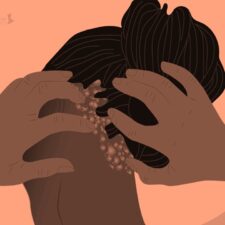If there is one thing that Sickle Cell “Warriors” — those battling with the inherited blood disorder that often creates crescent (sickle)-shaped blood cells — share, it is the excruciating pain that accompanies the disease as the cells move through the blood vessels.
The 17th Annual Hybrid Sickle Cell Disease Educational Summit, hosted by the Cayenne Wellness Center and Children’s Foundation, Sept. 17 to 20 in San Jose, Ca. brought hundreds of patients, caregivers, healthcare providers, and advocates together to address just that.
This year’s theme, “Let’s Talk About Pain: The Seen and Unseen,” sparked candid conversations about the visible and invisible dimensions of living with sickle cell disease (SCD).
“Pain is the most common and debilitating symptom of sickle cell disease, but it is also one of the least understood,” said Dr. Carolyn Rowley, Executive Director of Cayenne Wellness Center. “Our goal this year was to create space for patients to share their lived experiences while also ensuring the medical community understands that pain is not just physical, but emotional, social, and systemic.”
Over the course of four days, attendees engaged with groundbreaking sessions on new therapies, advocacy efforts, and holistic approaches to care. The opening day highlighted FDA-approved treatments, emerging therapies, and promising curative options. “The pipeline for sickle cell care is stronger than ever,” said one researcher, “but equitable access remains the greatest challenge.”
The first day ended with a private screening of a moving documentary, “You Look Fine,” by comedian and Sickle Cell Warrior, J. Snow, that is executive produced by Actor Marlon Wayans, and chronicles Snow’s journey with the disease.
The second day started with some studies and examples of alternative pain relief efforts, including some effective music therapy, and acupuncture that some credited for allowing them to postpone hip surgeries or treatments. The day then shifted to advocacy and systemic barriers. Conversations ranged from the stigma patients face in emergency rooms to the unique needs of incarcerated individuals living with SCD.
Cayenne Wellness, a California-based non-profit organization dedicated to advocating for systemic change and improved livelihood for those with SCD since 2000, has tried to engage health care providers in not mistreating the predominantly Black SCD diagnosed patients. Oftentimes, SCD patients are not believed that they are experiencing pain at emergency room hospitals, characterized as drug addicts seeking opioids for addictions feigning their pain, and often left untreated or ignored by healthcare providers.
Nurses participated in specialized training sessions, while community leaders called for expanded education around sickle cell trait and newborn screening. The day concluded with a moving Celebration of Life ceremony, honoring those lost while affirming the resilience of the community.
The Day two closed with two powerful tracks — one centering patients’ voices and the other designed for physicians and medical professionals. Both explored the future of pain management, healthcare delivery, and the role of community advocacy.
Day three honored leaders and pioneers in the field. A series of keynote addresses interwove with tributes and breakout sessions tailored to patients, nurses, and psychosocial considerations. The deep dive into pain examined acute, chronic and neuropathic pain and for those living with the condition to interact with health care providers to share their journeys with pain and treatment so that there was a better understanding from both sides.
The summit also featured a Benefit Concert & Awards Ceremony, blending music, celebration, and recognition of those advancing the fight against SCD. It started with an entrance of SCD “Warriors” entering the room
One of the most powerful moments came during the Tribute to Our Golden Warriors, celebrating individuals aged 70 and older living with SCD. “For decades, people were told they wouldn’t live to adulthood,” said Dr. Rowley. “To honor elders in their seventies and beyond is a testament to progress, perseverance, and faith.”
“We have warriors among us,” one speaker said during a tribute, “and their stories remind us that every life lived with sickle cell is both a triumph and a call to action.”
While the energy was celebratory, sobering statistics underscored the urgency of the work. Each year in the U.S., approximately 1,500 babies are born with sickle cell disease. Yet research funding remains deeply inequitable –on a per-person basis, cystic fibrosis receives 11 times more funding than SCD. Life expectancy for those with SCD hovers around 40 to 45 years, more than three decades shorter than the general U.S. population.
Cayenne Wellness created a one-page “Sickle Cell Pledge” for healthcare providers that the providers repeated on the final day. “It starts with you. It is unacceptable for the medical community to tolerate this racist mistreatment of patients living with SCD in our emergency departments and hospitals. Our hospitals and clinics must be safe spaces for patients with SCD.”
It continues: “It begins NOW. Let’s take the Pledge” and starts with:
- “Persons diagnosed with SCD are born into pain…
- I will stop calling and referring to patients as ‘sicklers’ and ‘frequent flyers’ and correct others when they do it….
- I know that the majority of patients diagnosed with SCD are NOT drug addicts nor are they feigning their pain.
- Only 1 percent of the population may have issues with addiction…
- When a patient states that the pain they are experiencing is different, I will assist i making the physician aware to run more tests and keep them for observtion. This action can save their life. DDX for acute chest syndrome, blood clot)…
- I will assist in getting persons with SCD assessed and triaged rapidly, assigned high priority for evaluation AND receive their first analgesic within 60 minutes of arrival to the ED.
- I pledge to be a nurse, physician, and caregiver advocate for persons diagnosed with SCD. Sickle Cell Lives Matter and it begins with ME.”









